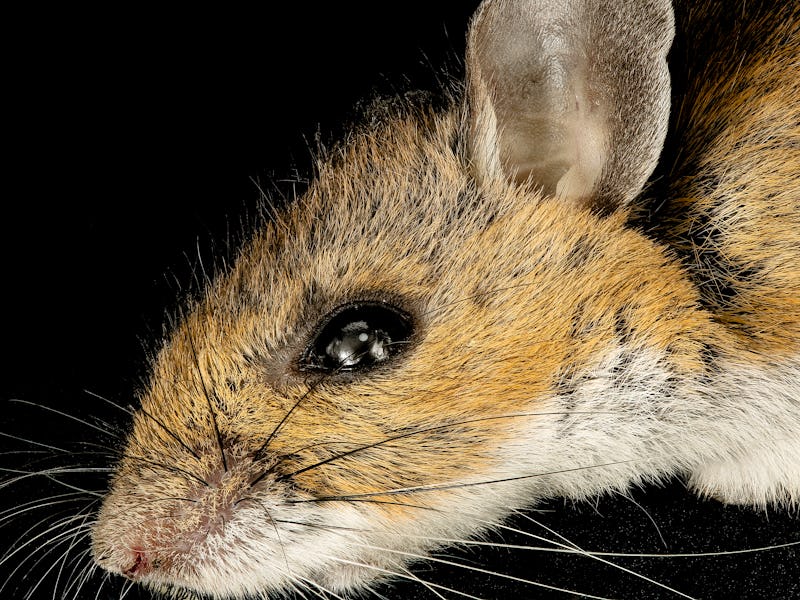Human Mini-Brains Implanted in Mice Integrated With Their Animal Hosts
Human brain cells actually forged connections to the mice's neurons.

Today, if a patient needs an organ transplant, they have to get on a waiting list and hope someone with a matching organ dies before they do. But in a not-too-distant future, we may be able to grow backups — perhaps even using mini-organs, called organoids, to extend our lives as we replace old organs with fresh ones before the originals fail. And what better place to grow these organs than in the place where organs usually grow: inside an animal. Earlier this year, in a huge step toward this eventual goal, scientists experimenting on mice got much more than they bargained for.
In April, Inverse reported that researchers at the Salk Institute had successfully implanted human brain organoids into the brains of mice. And not only did these mini-brains grow, they also integrated with the mice’s brains. These clusters of human brain cells actually forged connections to the mice’s neurons and merged blood supplies. WTF indeed.
This is #19 on Inverse’s list of the 25 Most WTF stories of 2018.
This research, outlined in a Nature Biotechnology article, builds on a rapidly growing field in which other scientists grow all sorts of usable tissues in the lab.
In addition to transplantation, lab-grown organoids can be used to help researchers better understand the function of different human tissues without the ethical concerns of experimenting on humans. As shown in the video above, human eye cells grown in the lab can help researchers better understand the way we see color. In a slightly stranger experiment, researchers have dosed human brain organoids with the psychedelic drug 5-MEO-DMT to see what happens to our brain cells when we trip.
This experiment wasn’t the first time scientists had seen human brain organoids begin to integrate with those of their host rodents. In 2017, a team at the University of Pennsylvania implanted human brain organoids into rats, where they integrated and survived for months. In the mouse experiment, the organoids survived for 233 days in some cases. In both cases, despite the organoids’ blood vessels and nerve cells integrating with the mice’s brains, the host animals did not show signs that they were benefiting from human intelligence.
That being said, these successful experiments have medical ethicists thinking long and hard about what to do if the day comes when such experiments do result in mice with human-like intelligence. Fortunately, in a 2017 experiment with human-pig chimeras, scientists assured Inverse that there’s a “safety switch” to keep organoids in non-human animals from becoming sentient.
As 2018 draws to a close, Inverse is counting down the 25 stories that made us go WTF. Some are gross, some are amazing, and some are just, well, WTF. In our ranking from least to most WTF, this has been #19. Read the original article here.
Watch the full 25 WTF countdown in the video below.